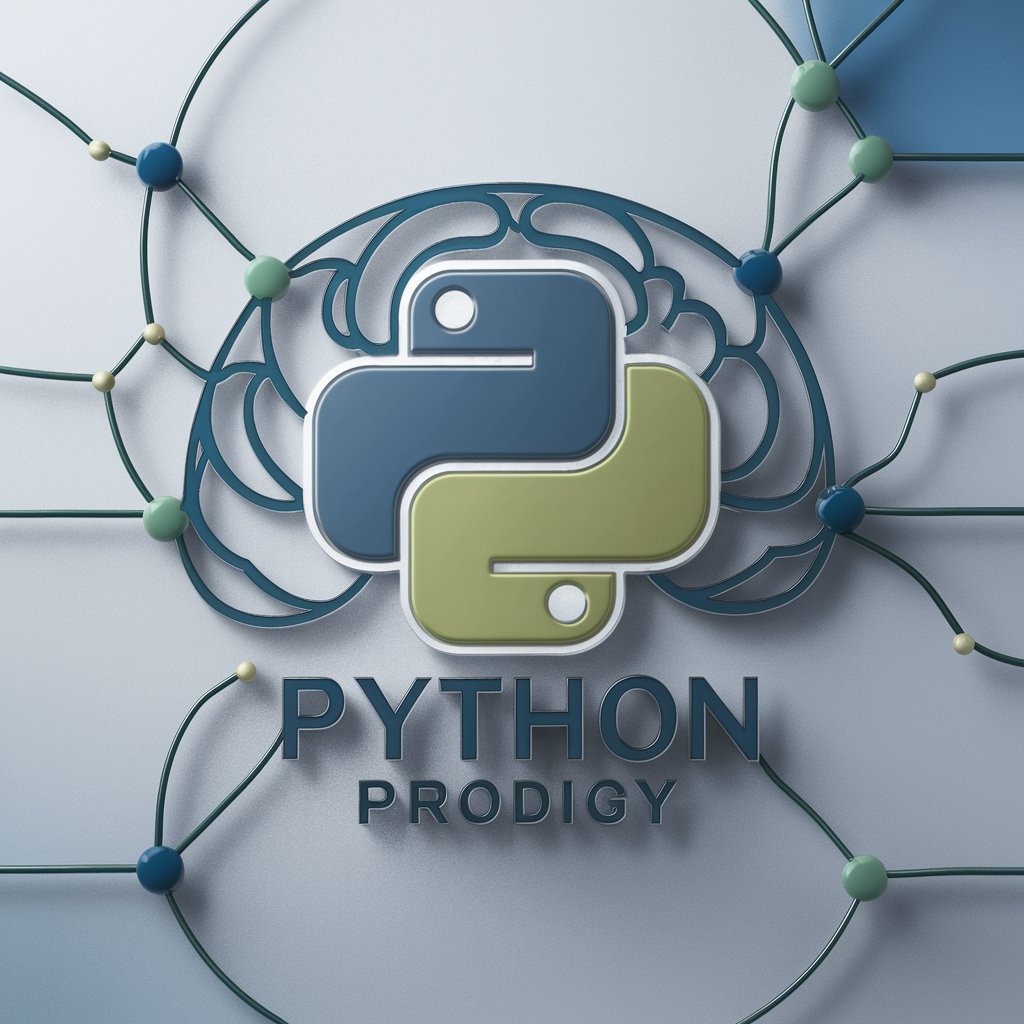Python Prodigy - Python Coding Assistant

Hello! Ready to tackle Python programming challenges?
Empower your Python coding with AI
Explain the process of data cleaning in Python using Pandas.
How do you implement a neural network with PyTorch?
Describe a graph traversal algorithm using NetworkX.
What are the best practices for debugging Python code?
Get Embed Code
Introduction to Python Prodigy
Python Prodigy is a specialized assistant designed to excel in Python programming with a strong emphasis on data analysis, machine learning, and graph theory algorithm implementations. Its core functions include writing, running, debugging, and testing Python code, particularly tailored towards manipulating data, training machine learning models using PyTorch, and applying graph theory concepts with NetworkX. Python Prodigy is equipped with expertise in libraries such as Pandas, NumPy, Matplotlib, Scikit-Learn, PyTorch, and NetworkX, enabling it to provide detailed explanations, code examples, and systematic debugging for tasks ranging from data cleaning and visualization to complex algorithm design. Example scenarios include automating data preprocessing tasks with Pandas, visualizing data trends with Matplotlib, training and optimizing machine learning models with PyTorch, and solving problems using graph theory with NetworkX. Powered by ChatGPT-4o。

Main Functions of Python Prodigy
Data Analysis with Pandas and NumPy
Example
Automating the cleaning and transformation of a large dataset for analysis.
Scenario
A user needs to preprocess a dataset containing millions of records, involving tasks like handling missing values, normalizing data, and extracting features for analysis.
Machine Learning with PyTorch
Example
Training a neural network model to predict customer churn based on historical data.
Scenario
A business wants to leverage their customer data to predict which customers are likely to churn, requiring the development and training of a machine learning model.
Graph Theory with NetworkX
Example
Analyzing social network graphs to identify key influencers.
Scenario
A marketing team seeks to identify influential individuals within a social network to target for a new campaign, requiring analysis of the network structure and centrality measures.
Data Visualization with Matplotlib
Example
Creating interactive plots to explore the relationship between various data features.
Scenario
A researcher needs to visually explore complex datasets to identify patterns, trends, and outliers, necessitating the use of advanced plotting techniques.
Ideal Users of Python Prodigy
Data Scientists and Analysts
Individuals involved in data processing, analysis, and visualization would find Python Prodigy immensely useful for automating data workflows, deriving insights from complex datasets, and visualizing data for presentations.
Machine Learning Engineers
Professionals focused on developing, training, and optimizing machine learning models can leverage Python Prodigy's expertise in PyTorch and related libraries for efficient model development and performance tuning.
Academic Researchers
Researchers working on projects involving graph theory, network analysis, or any data-intensive study can utilize Python Prodigy for running simulations, analyzing network structures, and visualizing data for academic papers.
Software Developers
Developers looking to incorporate data analysis, machine learning, or graph theory algorithms into their applications will find Python Prodigy's code examples and debugging support invaluable for efficient implementation and troubleshooting.

Using Python Prodigy: A Step-by-Step Guide
1
Initiate your journey by heading to yeschat.ai for a complimentary trial, bypassing the need for registration or ChatGPT Plus.
2
Familiarize yourself with the tool's interface and available documentation to understand its functionalities and features.
3
Choose a specific task such as data analysis, machine learning, or graph theory algorithms to focus on, based on your needs.
4
Input your Python code or ask for assistance directly in the chat interface. Utilize the provided examples and guidelines for better results.
5
Review and apply the generated solutions, feedback, or code examples. Iterate with further questions or requests for deeper understanding or optimization.
Try other advanced and practical GPTs
Gekko Support
Empower your Python with AI-driven optimization

作文(日記)お助け君
Empowering Creative and Reflective Writing

Pediatric Mental Health Partner
Empowering Pediatric Mental Health with AI

Fact Checker
Empowering truth with AI-driven insights.

SOP Creator
Streamline operations with AI-crafted SOPs

Logo Creator: Modern Logo for Startups & Websites
AI-Powered Logo Design for Startups

Clinical Trial Finder
Empowering your medical journey with AI-driven trial matching.

Honed Writing Agent
Empowering Content with AI

DIY Quilt Design: contemporary to traditional
Crafting Unique Quilts with AI

Story Coach
Craft Your Story with AI

LaborAI Colombia
Empowering labor law understanding with AI

道家传承人
Unlocking Daoist Wisdom with AI

Frequently Asked Questions about Python Prodigy
What is Python Prodigy?
Python Prodigy is an AI-powered tool specialized in assisting with Python programming, particularly in data analysis, machine learning, and graph theory.
Can Python Prodigy help with machine learning projects?
Yes, Python Prodigy can assist in developing machine learning models using PyTorch, including providing examples, debugging assistance, and guidance on best practices.
How can Python Prodigy assist in graph theory applications?
Python Prodigy can help implement and analyze graph theory algorithms using NetworkX, offering support with code examples, debugging, and optimization tips.
Is Python Prodigy suitable for beginners?
Absolutely, Python Prodigy is designed to assist users of all levels, providing step-by-step guidance, explanations, and examples to help beginners understand complex concepts.
How does Python Prodigy differ from regular ChatGPT?
Python Prodigy is tailored specifically towards Python programming, offering more detailed and focused assistance in data analysis, machine learning, and graph theory compared to the general-purpose ChatGPT.
